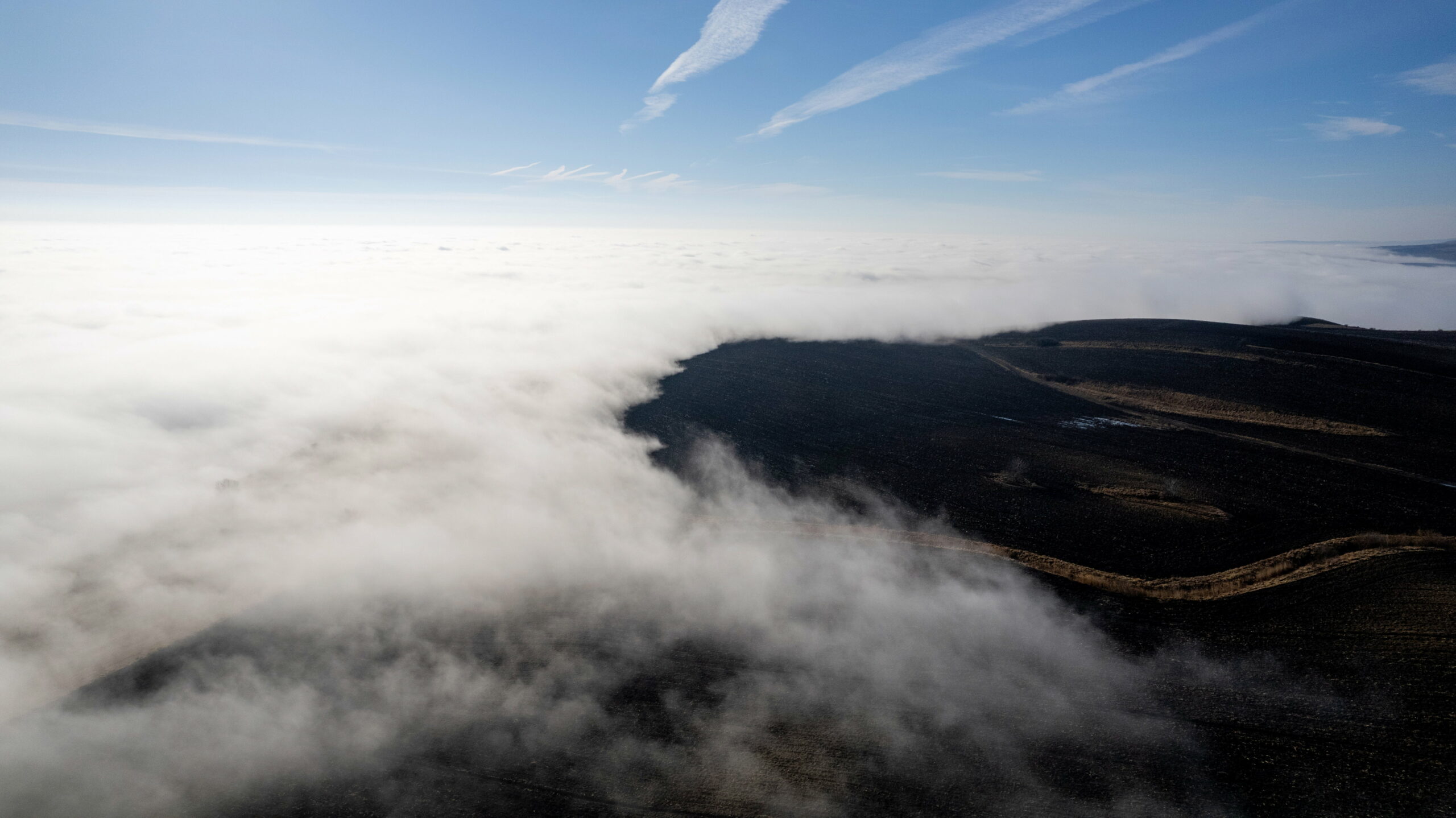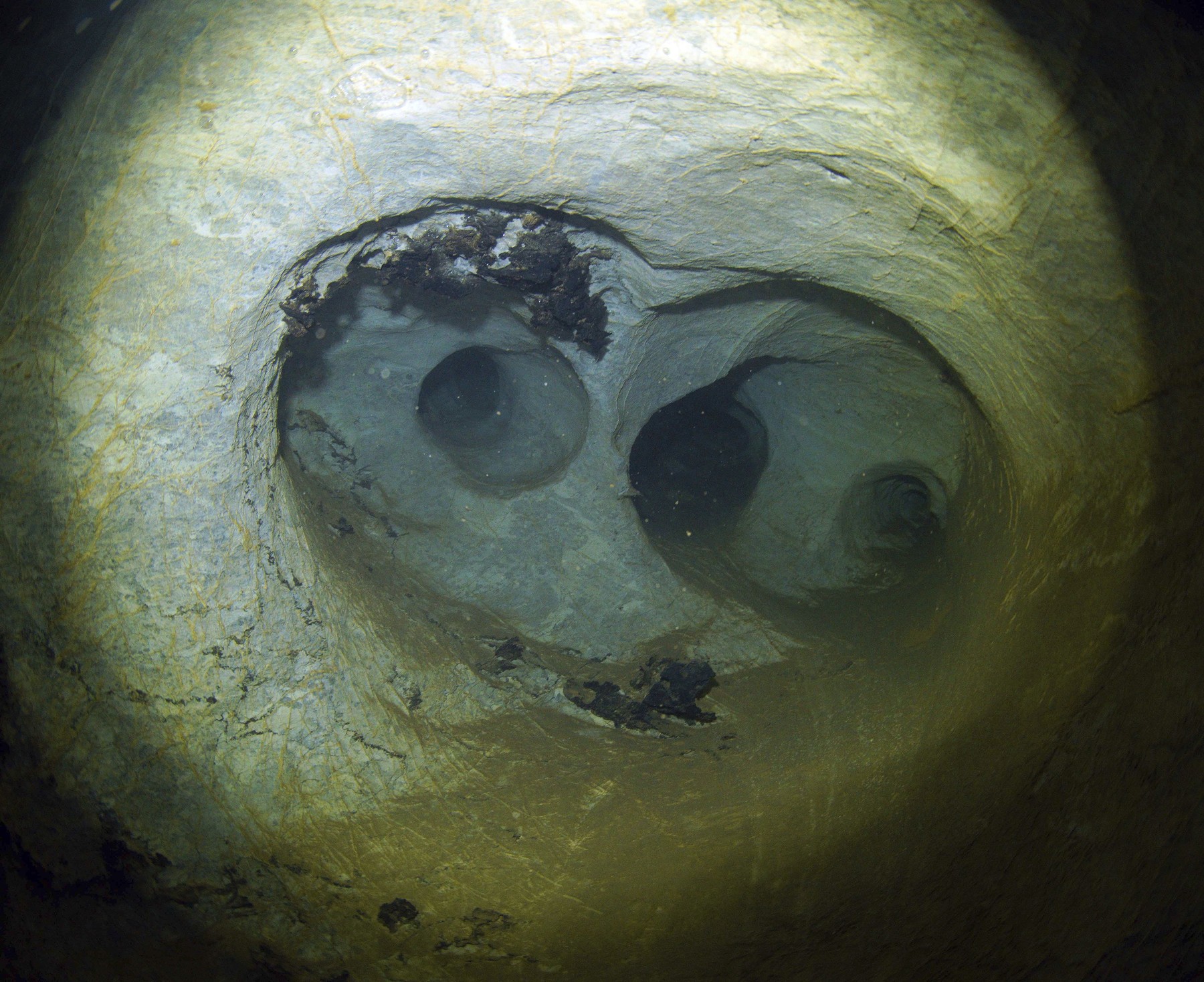It is possible that the Earth’s increased temperature could temporarily exceed the 1.5°C threshold of the Paris Agreement as early as 2024 due to El Niño.
Every two to seven years, the tropical Pacific Ocean is 3°C warmer (known as El Niño) or cooler (La Niña) than normal, triggering a cascade of effects that are felt around the world. This cycle is called El Niño Southern Oscillation (ENSO), since every El Niño phenomenon is naturally followed by a La Niña phenomenon, and vice versa, we can experience a neutral state for a few months. The change in sea surface temperature associated with ENSO events may seem marginal, but it is more than enough to disrupt weather patterns globally, and to disrupt large-scale air circulation even in the polar stratosphere 8 km above Earth.
Possibility of an El Niño (red), La Niña (blue), or El Niño neutral (grey) event in the coming months.
Image source: NOAA
It is not surprising that there has been a La Niña situation for two years in a row, but a three-year La Niña phenomenon, which has been present all over the world since 2020, is extremely rare. The US National Oceanic and Atmospheric Administration (NOAA) has stated that the tropical Pacific Ocean will return to its neutral state between March and May 2023, with El Niños likely in the fall and winter.
Because of the strong influence of ENSO on precipitation patterns and global temperatures, scientists are constantly monitoring the state of the tropical Pacific Ocean to provide the best possible information. So what can the world expect from the upcoming El Niño event and which of them will affect our country?
The level of warming exceeded 1.5 degrees
During El Niño, the ocean transfers some of the extra heat and moisture back into the atmosphere, like when you cook pasta and your kitchen gets steamy. In addition to the global warming trend, a strong El Niño could increase the Earth’s average temperature by up to 0.2°C. 2016 was the warmest year on record, during a particularly strong El Niño.
With the planet already warming by about 1.2°C compared to pre-industrial times, and some extra heat added to the El Niño atmosphere, it is possible for the Earth’s warming temperature to temporarily exceed the 1.5°C target set in the Paris Agreement threshold. El Niño is expected to peak in 2024-25, though we don’t know exactly how strong this upcoming event will be. Increasing heat waves will also appear in the weather of our country.
More heat, drought and fires in Australia
Australia experienced three years of above average rainfall due to prolonged La Niña conditions, which caused severe flooding, particularly in the east. During El Niño, scientists expect the opposite: less precipitation, higher temperatures and an increased risk of fires, especially in the southern hemisphere winter and spring.
As the globe warms, some regions are warming faster than others. A good example of this is Australia, where its temperature is currently 1.4 degrees Celsius higher than it was at the beginning of the 20th century. The area affected by wildfires on the continent is increasing every year, due to drought caused by climate change. This is despite Australia experiencing unusually wet years during the most recent La Niña event. The primary effects of climate change make the country highly vulnerable to the effects of El Niño.
Plants in South America absorb less carbon
In South America, the effects of ENSO were first documented by Peruvian hunters centuries ago. Because of its proximity to the tropical Pacific Ocean, South American weather is greatly affected every time an El Niño event occurs: flooding on the west coast of Peru and Ecuador, and droughts in the Amazon and the Northeast, all of which can reverberate over the consequences of crop failures. the scientist.
During El Niño events, decreased precipitation and higher temperatures in Colombia have been associated with outbreaks of insect-borne diseases such as malaria and dengue. The high temperature during El Niño increases the ability of mosquitoes to reproduce.
Elsewhere during El Niño, the Amazon rainforest dries up and vegetation growth slows, absorbing less carbon dioxide from the atmosphere, a trend also found in tropical forests in Africa, India and Australia.
Cold winters in northern Europe
The balance between an area of high pressure over the Azores and low pressure over Iceland determines where Europe gets the most precipitation in winter. During the winters of the El Niño period, the two centers of pressure lost strength, thus bringing wetter conditions to southern Europe and the Carpathian Basin.
However, the greatest impact can be seen in northern Europe, where winters are getting colder and drier. Winter 2023-24 will likely be cold if El Niño intensifies enough by then.
Understanding the intricacies of the climate system is like putting together a great puzzle. The oceans interact with each other and with the atmosphere, which is simultaneously fed by the ocean. We do not know exactly how El Niño will behave, but its effects are likely to be exacerbated by climate change in different regions of the world.










































